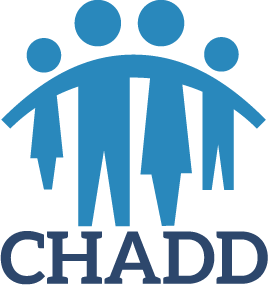ADHD in the News 2025-01-16
ADHD Incidence Trends Fluctuated from 2016 to 2023 in Adults, Adolescents
Key Takeaways: Adult ADHD diagnoses decreased from 2016 to 2020, then increased post-2020, influenced by awareness and COVID-19 impacts. Adolescent ADHD diagnoses declined until 2018, then stabilized, with higher incidence rates than adults. Expanded DSM-5 criteria and varied diagnostic practices may have contributed to fluctuating ADHD diagnosis rates. Study limitations include demographic biases and lack of covariate adjustment, necessitating further research into ADHD incidence trends.
FDA bans Red No. 3, artificial coloring used in beverages, candy and other foods
The Food and Drug Administration said Wednesday it’s banning the use of Red No. 3, a synthetic dye that gives food and drinks their bright red cherry color but has been linked to cancer in animals.
ADHD Med Trials Often Miss the Mark
Clinical relevance: Persistent Adderall shortages and rising diagnoses highlight the mismatch between randomized controlled trials and real-world ADHD treatment. A Swedish study revealed that more than 53 percent of nearly 190,000 ADHD patients would not qualify for traditional RCTs. Ineligible patients faced significantly higher risks of adverse outcomes, including psychiatric hospitalizations and specialist care for mental health and substance use issues. RCTs often exclude patients with comorbid conditions, creating a gap between trial findings and real-world treatment needs.
Music can improve focus for people with ADHD—here’s what to listen for
If you habitually pop in AirPods when you really, really need to get some work done in your open-concept office, you're far from alone. Nearly 80% of adults listen to music while they work, and playlists purported to improve focus have become a routine finding on Spotify and Apple Music.
In Atopic Dermatitis, Dupilumab Use Linked to Less Sleep, Psychiatric Disorders
[Excerpt] The dupilumab cohort had fewer incident diagnoses vs the conventional drug cohort for anxiety (4.2% vs 4.8%; P =.097), depressive disorders (2.8% vs 3.4%; P =.041), adjustment disorders (0.7% vs 1.2%; P =.011), and sleep disorders (3.4% vs 3.8%; P =.226), but a slight increase in ADHD cases (0.8% vs 0.7%; P =.834).
Study explores link between people’s professions and their genetic predisposition to neuropsychiatric traits
Polygenic scores (PGS) are metrics used to estimate the genetic predisposition of people to developing specific mental health conditions, personality traits or diseases. In recent years, these metrics have often been used to investigate the intricate connections between genes and environmental factors.
High-fat diet linked to impulsive behaviors and brain changes
Research highlights effects of high-fat diets on behavior, brain plasticity, and fatty acid metabolism in rats
Connecting Biology to Behavior: Inside the ADHD Brain
Key points: ADHD is a neurobiological disorder, and biology influences ADHD behaviors. An imbalance in the brain neurochemical dopamine is associated with the symptoms of ADHD. Disruptions in certain dopamine pathways lead to attention, memory, and motivation challenges. Pharmacological therapies for ADHD increase brain levels of dopamine.
How to build a more inclusive workplace for those with ADHD, autism or PTSD: Ask HR
Question: Many HR representatives and managers don’t fully understand the challenges individuals with autism, attention deficit hyperactivity disorder, post-traumatic stress disorder, and other neurodiverse conditions face. The response to their disclosure or request for accommodations is often, “The job still needs to get done, and if you can’t do the job at this level, we will have to go in another direction.” How can we make the case to build an inclusive workplace to best utilize neurodivergent talent? ‒ Dion
Strategies for Attorneys With ADHD to Avoid Burnout
Key points: Discover your energy peaks to optimize your workday. Align tasks with your unique learning styles and explore and communicate your needs to thrive. Prevent burnout by embracing self-awareness and boundaries.
